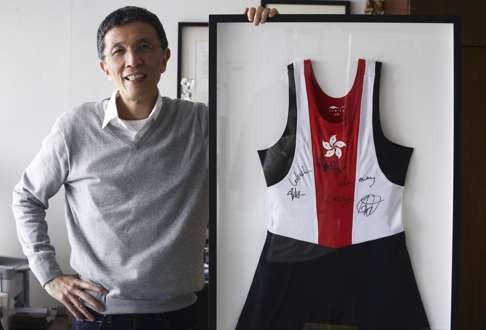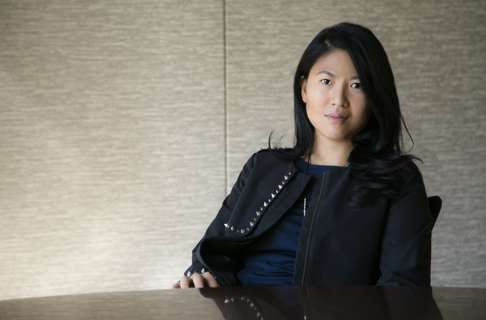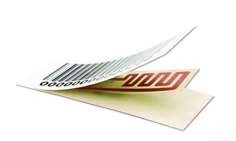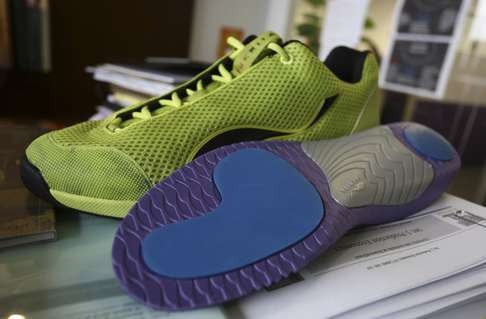
The research firms breathing new life into Hong Kong’s garment industry
City’s days as a mass clothing manufacturer are long gone, but scientists and entrepreneurs have given it a new role pioneering hi-tech fabrics, mannequins and more for producers worldwide

Sisters Lee Ka-man and Lee Yuen-yin will be the first Hong Kong women to compete in an Olympics rowing event, the culmination of years of intense training that often saw their double scull cut through Shing Mun river before dawn preparing for Rio. Hard work aside, they also had a bit of help from a little-known, specialist research institute.
“Hong Kong rowers work really hard but they have a low profile and don’t get many sponsors. So three years ago we decided to work with them to improve their uniforms, which were not very good at all. Ours have variable muscle compression and practically no seams, in order to minimise friction. The men and women teams wore these to the Asian Games two years ago and had their best ever result. I like to think that we have helped,” says Edwin Keh Yee-man, chief executive officer of the Hong Kong Research Institute of Textiles and Apparel, or Rita, as it is affectionately known.

Rita and a number of forward-thinking local companies, such as Alvanon and SML, are the new faces of Hong Kong’s textiles and apparel industry. Long seen as a dying sector, it may have a future by using innovation and invention.
Hong Kong’s textile industry has been intricately woven into the city’s economic and political make-up since the 1940s, when the first wave of successful mainland mill owners fled with their capital and know-how to Hong Kong after the Communist revolution.
After China opened up its economy in 1978, Hong Kong factories started moving north to take advantage of the cheaper labour. Most contracts came from Western fashion brands that outsourced the manufacturing of their products to these factories. When costs started to rise in Guangdong province, where Hong Kong factory owners first planted their flags, they moved their plants further west or into Southeast Asia.
This so-called original equipment manufacturer (OEM) model has become increasingly unsustainable because labour costs keep rising and the retail prices of everyday clothing keep falling. It is also increasingly hard to find the labour since people have more job options as the local economy matures.
Keh says this reality has taken a long time to sink into the minds of local OEM businesses. “The long legacy of our textile and garment industry may be a disadvantage. Our access to cheap labour was our main value and it was a model that worked well for a long time, so the industry has been slow to change. But now we must create new value by migrating towards service and innovation,” he says.
Many people think that the most logical way for OEMs to evolve is to sell their own branded fashion, but that’s not what Rita is interested in.

Janice Wang Jan-yee is chief executive officer of Alvanon, a company that consults fashion brands on how best to make clothes and manage their supply chains, and she agrees with Keh that Hong Kong should not be tempted by the more glamorous aspects of the industry.
“How many Hong Kong fashion designers have really made it in the world? We are not a fashion city. Hong Kong needs to focus on what it is best at,” she says.
Her answer to that can be seen in the transformation of her family’s business. In 1957, her grandmother had set up an OEM that made children’s wear. Her father, Kenneth Wang Kuk-kei, took over the company in 1974 and gradually realised he needed to find more competitive ways to make money. In 2001, he set up Alvanon, named after Thomas Alva Edison, and invested in technology such as 3D scanners to find ways to help fashion brands make clothes that fit better. When he died in 2010, his daughter Janice and two of her brothers took over the running of the company.
Janice Wang says 3D technology has helped Alvanon become the world’s biggest maker of fitting mannequins used by apparel makers, and it has also branched out into supply chain consultancy. “If companies follow best practices, they can shave off a third of the time it takes to deliver a product to market. We also help them reduce inventory, which is important because inventory is money,” she says.
One of Alvanon’s clients is Reebok, the sportswear brand which has a product line for Crossfit, a physical training method that involves a wide-range of exercises, from running to weightlifting. “Crossfit athletes have very different body shapes from you and me. We scan their bodies and help Reebok incorporate the data into their product development. We also help them decide how much of each fit and size to stock. We have the market data to do that, the context of the brand that translates into the percentage of a population that would buy Reebok Crossfit products,” Wang says.
At the moment, the company is investing in a next-generation scanner – an intelligent video camera that recognises what size, colour and shape garment someone is wearing. “It would be for data gathering and can have lots of applications. We are building it ourselves,” she says.
SML is another Hong Kong company that has made the transition from low-tech, low-margin manufacturing to selling technology. In 1985, Simon Suen Siu-man set up his first factory in Dongguan to make woven labels for Western apparel makers, those completely unexciting displays of size, materials and care details that every mass-manufactured garment has. By the 2000s, SML was selling labels to the likes of Gap, Banana Republic and Petagonia and had a factory network that covered China, Southeast Asia, India and even Peru.

An RFID label has a built-in chip that emits radio signals that can be picked up by a remote scanner. It is much more efficient than barcode readers because it doesn’t require a person to scan the label one by one. Stocktaking, one of its most popular uses, can be done constantly, in real time.
In 2013, J. C. Penney became SML’s first major RFID client. That year, they also bought a software company to design the interface for reading the tags. One of the latest clients to sign up is Tesco, the British supermarket chain. “Our contract with Tesco is to introduce an RFID system across its 340 F&F fashion stores, and to integrate the tags into its online sales channel. This allows shoppers to find out immediately which shops stock the items they want,” Lau says.

By 2020, when the summer games will be held in Tokyo, Keh reckons sports will have become a real battleground for hi-tech apparel. “By 2020, we hope to have developed apparel systems where layers of clothing interact with each other to pass heat and moisture, and also incorporate wearable technology,” he says. “Our products will be able to take on the likes of Gore-Tex, for sure,” he adds.